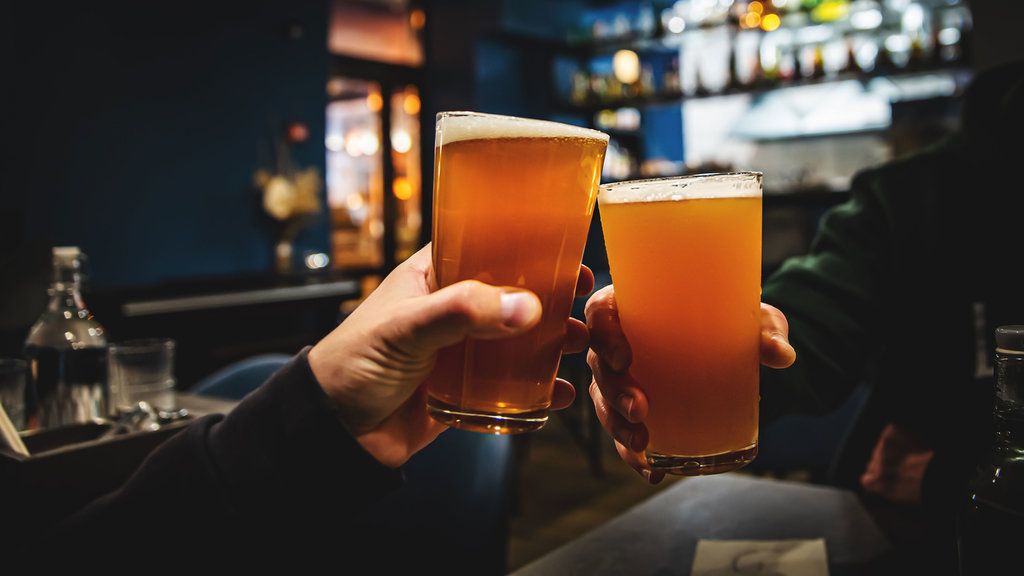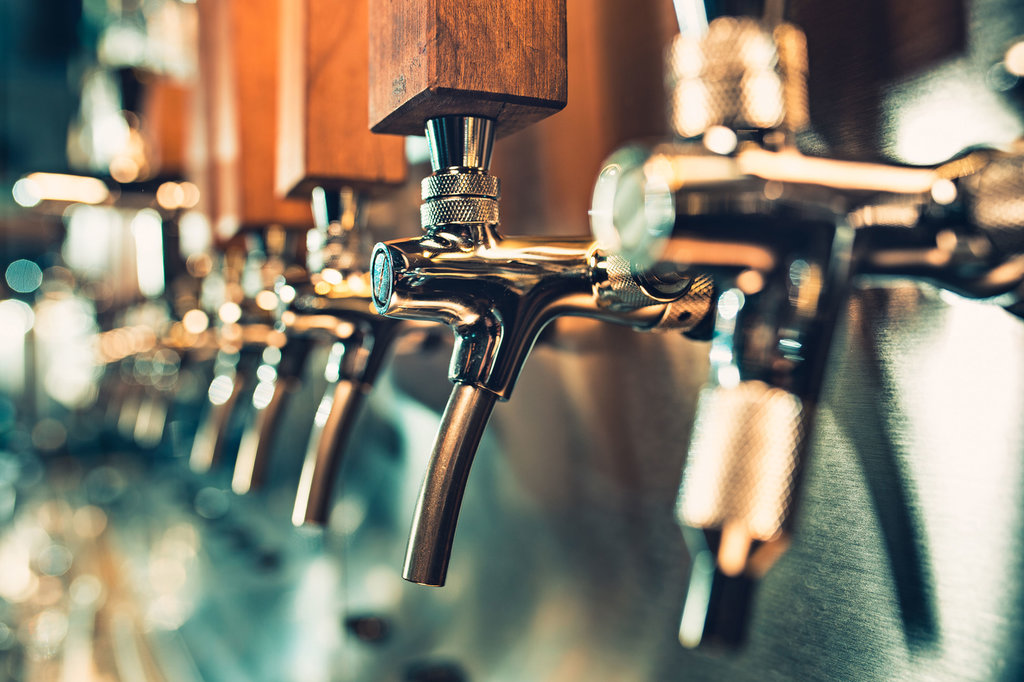Feature
Lost in a haze: North American craft beer searches for mojo
The once-dynamic North American craft beer market is now stagnant. A lack of innovation in a sector awash with hazy IPAs has been blamed but what, Stephen Beaumont wonders, might come next.

Craft beer in North America has stalled. That much is plain to see.
From the era of annual double-digit growth, which has lasted for an inordinately long period from craft’s naissance in the early 1980s until the late 2010s, the past few years have seen more-or-less stagnant sales, with the US seeing a 1% drop in production in 2023.
Craft beer’s overall annual market share inched up 0.2% last year but the less-than-buoyant figures have left most industry participants and many observers wondering what the future could hold and how (or even if) it might be possible to restore the sector to growth.
At the core of this quandary is the fact that, for most of craft beer’s existence, brewers, industry watchers, and even many drinkers have struggled to define precisely what makes craft beer ‘craft.’ Size was a good marker, until some breweries grew sufficiently large that it wasn’t, and using ingredients as a yardstick was always going to be a non-starter in an industry segment that from the outset has self-defined as iconoclastic.
Taste, while helpful, was in the end too subjective to be of much use, which left only intent.
Craft beer, it was said, is developed in the brewery by the brewers, as opposed to mainstream beer, which is dictated by marketing executives in corporate boardrooms. More plainly, craft brewers make what they want to drink, whereas mass-market brewers brew what they are told will sell.
And so long as North American craft beer continued to grow in double digits year-to-year, selling everything that all but the least competent brewery could make, it was an ethos that served the industry well. Until, that is, the bloom began to fall off the craft brewing rose.
From roughly 2010 to 2019, North America’s craft brewers could do no wrong. Literally thousands of breweries opened over the decade, flooding the marketplace with hundreds of thousands of hectolitres of beer, all of which was snapped up by a thirsty populace. But, with the gradual slowing of growth over the late 2010s and the eventual arrival of Covid-19 and pandemic-induced lockdowns, all that excitement ground to a halt, leaving brewers to wonder if ever it would return.
It has not and that has caused many brewers to re-evaluate their approach to the market.
Give the people what they want
According to Lee Lord, brewmaster at Rhode Island-based Narragansett Beer, things started to change even before the onset of the pandemic.
“While working at my first professional brewery job [in the early 2010s], I also worked at a bottle shop and, while bombers of west coast Double IPAs ruled the shelves, every once in a while, we’d get a drop of hazy IPAs and they’d be gone within hours,” she says. “The oversaturation of that style started well before the pandemic but I think that was the real turning point.”

The hazy pale ales and IPAs that came to dominate the North America craft beer market, olfactory-heavy, fruity hop-forward, marked a significant shift in the sector, as a new generation of beer drinker became borderline obsessed with the haze. This led to a race by many, perhaps most, breweries to get on top of the trend, often rushing to market multiple interpretations of the styles collectively known as ‘hazies’ all at once, literally forcing beers of other styles off the taps and shelves.
Adrian Rodriguez-Montfort, the head of Mexico’s Cerveceria Paracaidista, which is in the middle of relocating from the Mexican capital to Baja California and Chicago, recalls the time well and says hazy IPA had been an economic necessity.
There are only so many ways you can make a lasagna and it’s the same for hazy IPAs.
“In our taproom, attendance nearly doubled on average after I finally caved in and started including hazy IPAs on our tap list,” he says. “Simply, if folks walked in and did not see at least a number of hazy IPAs on tap, they wouldn’t even bother trying anything else. In this way, it has generated a generation of new and, dare I say, lazy craft beer drinkers who are not willing to explore any other styles beyond [hazies].”
This ‘haze craze,’ as it’s become known, led to several market shifts in North America, including the one most cited by craft brewers themselves: an overabundance of beers of very similar, sometimes almost interchangeable, character and flavour. As one veteran brewer who asked to remain anonymous put it: “There are only so many ways you can make a lasagna and it’s the same for hazy IPAs. That’s why so many of them taste the same.”
What made craft beer successful was that it was brewer-driven, and innovation-driven and I’m afraid we are losing that.
Mitch Steele, New Realm Brewing
Also significant was that, for the first time in modern craft beer’s existence, brewers found themselves forced to produce beers of a style many of them didn’t particularly like. Quiet, off-the-record discussions with any number of North American brewers have revealed that many loathe the style and resent having to make it, sometimes even admitting to not being partial to their own version.
While he doesn’t go as far as to say he dislikes hazies, Joe Walters, owner of the 1 For All Brewery in Livonia, Michigan, confesses to having procedural issues with the brewing of his fourth best-selling beer, the hazy IPA called Sacred Shapes. “I don’t like making the hazy IPA style because it goes against everything I’ve learned or have taught about brewing,” he says. “Mine does taste great but there are several brewing processes that have to be done improperly to slow down the natural clearing of the beer.”
Mitch Steele, co-founder and brewmaster at Atlanta-based New Realm Brewing, outlines the third shift driven by the haze craze. “Marketing people have much more impact on a brewery’s decision of what beers to brew and the beer line-up is less dictated by brewers than it used to be,” he says. “What made craft beer successful was that it was brewer-driven, and innovation-driven and I’m afraid we are losing that.”
A monster of its own making
The market for hazy IPAs also raises a chicken-and-egg question: was the haze craze legitimately driven by consumer demand or were consumers turned to hazies specifically because craft breweries were making and heavily promoting so many of them?
“Without a doubt, the current situation craft finds itself in is of craft’s own making,” says the anonymous veteran brewer. “A large segment of beer drinkers only wants to drink ‘hop juice’ because that’s what they’ve been told they want and breweries became obsessed with making the ‘latest and greatest’ beer that they could charge a lot for. All that stymied innovation and creativity.”

New Realm’s Steele offers a slightly more nuanced take. “One key element in the United States is beer distributorships, who, by and large, dictate what beer styles breweries should brew,” he says. “Their influence cannot be understated [and] they don’t want to build brands. They want to deliver beer they know will sell.”
Ontario is Canada’s largest beer market. The Liquor Control Board of Ontario (LCBO), the state agency in charge of alcohol sales, had much the same impact as did the distributors Steele cites. While responsible for only about 40% of the province’s beer sales, a disproportionate amount of that is Ontario-brewed craft beer. “A few years back, I was told by the LCBO that they ‘weren't interested in any Ontario craft SKUs that weren’t hazy IPAs for that year’,” Geordan Saunders, founder of the Napanee Beer Company says.
For Narragansett’s Lord, it is perhaps neither chicken nor egg. “I don't think there's a black and white answer,” she says. “It's less the case now but, for a time, it was very hard to draw word of mouth or pack a taproom unless you had a hazy IPA offering. For countless breweries, the mentality was play the haze game or die, which has resulted in the oversaturation and redundancy in the market today.”
Looking to the future
While the haze craze does indeed appear to be easing off, along with the public’s thirst for the quick, mixed-fermentation beers known as kettle sours, which have experienced an even more precipitous rise and fall, what comes next is anyone’s guess. One thing that’s for certain, however, is that there is presently no stampede to develop the ‘next big thing’.
According to data recent released by Bump Williams Consulting and reported in Brewbound, the number of new beer brands in the US declined 28.3% in 2023, preceded by a much smaller drop in 2022 and followed thus far by similar results in 2024. These declines could be attributed to a “space squeeze,” Williams says, or it could be a proactive pursuit of efficiency.
Craft beer is in a bit of a weird holding pattern right now.
Lee Lord, Narragansett Beer
According to Lord, it could also be something as simple as the industry taking a collective pause. “I think craft beer is in a bit of a weird holding pattern right now,” she says. “Covid changed the landscape, as did the cannabis industry, [and] bars and shops are showing much more reluctance to take a chance on craft breweries over the big guys.”
Lord says brewers need to “keep an eye on emerging and young consumers and see how we can help each other get a new generation excited and passionate about craft beer”.
Her sentiments are echoed by Steele. “The demand for these trendy beers is coming from young drinkers who don’t really understand what an IPA was, beer distributors and people who don’t appreciate traditional beer flavour,” he says. “Brewers started this trend but much of the growth has been driven by other factors.”
He adds: “I’m certainly seeing significant movement back to ‘beer flavoured beer’ and I hope that sticks. But, as long as others are calling the shots, it will only stick if it’s an easy sell.”